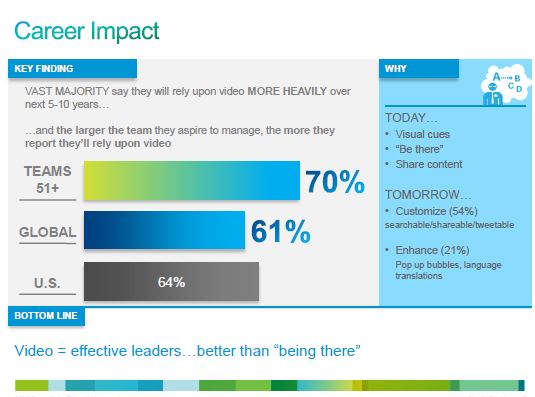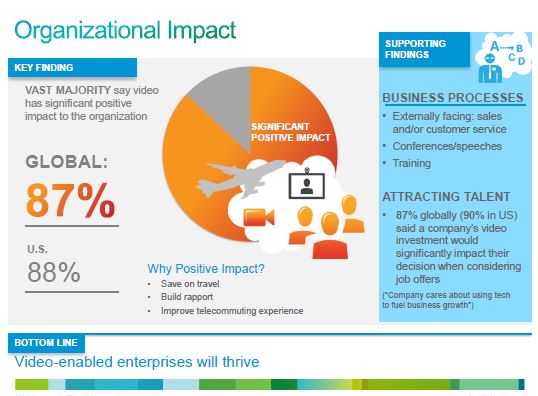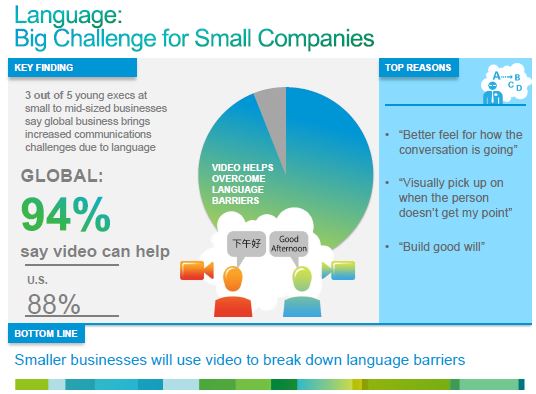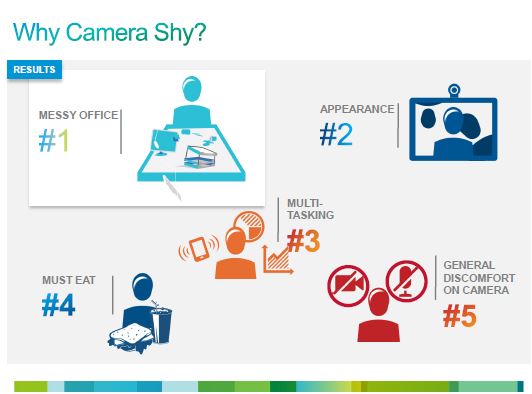For those of us of a certain age, the title song and name of Bob Dylan’s famous 1964 album, The Times They Are a-Changin,” never gets old nor loses its relevance. While this goes for all aspects of our lives, it is in many ways most noticeable by the entrance of a new generation into the management ranks of enterprises around the world. They bring with them not just the cultural proclivities that they share, but also a very different perspective on the roles technology can play in the workplace.
Cisco, back in 2011 in its connected world technology report, called this emerging group “The Collaboration Generation.” What they found in their research at that time was that the generation rising through the ranks was driving a transformation in the workplace fueled in no small measure by their digital dexterity. For example Cisco found back then that:
- 40 percent of those surveyed would take a salary cut for device flexibility
- 2 of 3 wanted to work from anywhere and did not see offices as necessary for productivity
- 64 percent said they would choose an Internet connection over a car
- 50 percent stated they would rather lose their wallet than their device
Well all of this got the Cisco researchers thinking as they looked at various technology trends that could accelerate changes in the workplace based on the collaboration group’s views. They were curious what role this next generation of managers felt video—broadly defined as not just interactive but streamed and stored as well—would play in their future as it related to the workplace.
Cisco recently commissioned RedShift Research to survey 1,315 young executives (ages 34 and younger) from the Denmark, Finland, France, Germany, Norway, Spain, Sweden, the United Kingdom and the United States, and the results are out. They are, to say the least, interesting. At a high level, these next-generation young executives intend to depend heavily upon business-class video to connect with colleagues and subordinates, as well as to help their businesses deliver new products and services.
- Three out of five young executives say they will rely more heavily on business-class video during the next five to ten years.
- 87 percent believe video has a significant and positive impact on an organization, citing benefits ranging from an enhancing the experience of telecommuters to saving money on travel costs and even attracting top talent.
- 94 percent of those organizations with less than 400 employees value video as a way to break down language barriers in the increasingly global marketplace.
- 87 percent say they would choose to work for a video-enabled organization over a company that has not invested in business-class video communications, because the video-enabled organization “cares about using technology to fuel business growth”
A look at the details
The study’s findings fall into three main categories that are top-of-mind for future leaders: video’s impact on their career, its impact on the broader organization and future business needs. Cisco was kind enough to provide the visualization of their findings which are certainly food for thought as to how a generation used to video feels about its value to them and the enterprise. Plus, I was fortunate to have an opportunity to have Angie Mistretta, Director, TelePresence Solutions Marketing for Cisco provided some additional insights.

Source: Cisco
In regards to the career impact, Mistretta noted the interesting response that while this next generation clearly sees reliance on video in their future as managers, those who see themselves as leading what hopefully are high performance teams were even more enthusiastic about the opportunities video can afford them than those overall. Mistretta also pointed out, “The fact that visual cues was the top reason for video interactions today and not the ‘Be There’ one which is associated with the traditional reason for video of travel avoidance, demonstrates the generational comfort level with the technology.” She also said that the desire to have video more searchable and shareable and enhanced with real time ability to provide translation capabilities in the form of pop up bubbles was an interesting pull-out and is indicative of the globalization of work.

Source: Cisco
While the overall positive organizational impacts were in line with research expectations, and for the expected reasons, Mistretta observed that, “We we interested that the top three business process improvements enabled by video were all externally focused.” The overwhelming view that video could be a differentiator in attracting talent and keeping talent is one of the more important takeaways here since the perception that a company is tech savvy is a finding throughout the survey as being a priority. .

Source: Cisco
There was not much to add in describing the above since it not only speaks for itself, but was mentioned in the earlier finding. It is one thing to be seen, and listened to, and another to actually be heard. As the Internet has made even the smallest of businesses global players, with supply chains that literally span the world, breaking down the communications barriers caused by language is a huge challenge. Video, by being able to show body language and facial expressions, can be invaluable in making sure all parties are heard. The pop up bubbles as facilitator would be a welcome tool.

Source: Cisco
The future needs are also self-explanatory and self-evident. However, as Mistretta stated, “It became very clear that quality of experience really matters. Respondents were OK with less than perfect quality when communicating internally although this was not a ringing endorsement, and showed that for the rest of their communications low quality just would not do.” She added that, “Video interactions need to have impact rather than be a distraction which is one of the reasons the market has been slow in taking off in the past.”

Source: Cisco
I actually love the last slide as a person who has always told friends and colleagues that I believe I have a face for radio. It was interesting to me that messy office trumped appearance in the survey, but as Mistretta explained, “The fact is in a work interaction we want to put our best foot forward and that means appearing like we are professionals and totally engaged.”
Rowan Trollope, senior vice president and general manager, Collaboration Technology Group, Ciscosummed it up by stating,“Today’s leaders are often tech enthusiasts. Tomorrow’s leaders are increasingly tech dependent and video is no exception to the rule. The next generation of leaders is realizing that using video makes them more productive, helps companies reduce costs and even plays a role in attracting the best talent available. They understand why video can be better than being there.”
Cisco believes that thanks to the next generation of manager’s video in the workplace, physical and virtual, will play a critical role. The survey’s findings demonstrate that when it comes to the Collaboration Generation:
- Video = effective leaders…better than “being there”
- Video-enabled organizations will thrive
- Technology providers must deliver ease of use and high quality/reliability; companies must educate
I told Mistretta that at the New York World’s Fair in 1964 I was one of the lucky ones who got to test Bell Labs demo of Picturephone service. Video is not new. Almost every year in the last several have been heralded as “The Year of Enterprise Video.”
What I believe the survey shows is that while it might not be next year, as a result of enterprises around the world being increasingly populated with younger managers who are not only digitally adroit but bring with them next generation devices, comfort with multichannel and immersive experiences, but also expectations about the user experience, that video finally is poised to become commonplace and possibly even the preferred way we interact. This includes greater use of stored and streamed video and not just for real time interactions. This is after all also the YouTube generation, and they understand the power of visualization for getting their messages across. In short, after a long gestation period, video adoption in the workplace may finally fulfill its promise.
Edited by
Stefania Viscusi